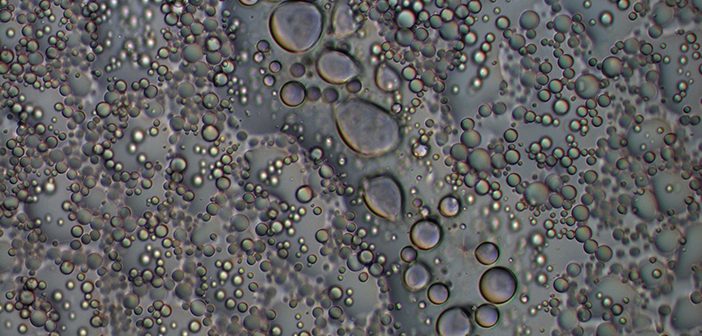Research reveals atomic-level changes in a protein associated with brain disorders.
For the first time, researchers have described atom-by-atom changes in a family of proteins linked to amyotrophic lateral sclerosis, a group of brain disorders known as frontotemporal dementia and degenerative diseases of muscle and bone. Their findings appear in the journal Molecular Cell.
The long-term goal of the research is to target this cellular pathway with a drug or other therapy to prevent these diseases, says the study’s senior author, Nicolas Fawzi, PhD, assistant professor of medical science. “There is currently no therapy or cure for ALS and frontotemporal dementia. We are pursuing new hypotheses and angles to fight these illnesses.”
Many proteins connected with these diseases contain low-complexity domains or pieces. Compared to a cell’s best-understood proteins, which are ordered and static in structure, low-complexity domains are squirmy and disordered. Instead of a rigid shape, these pieces of protein are flexible and float inside cells until cued into action.
In non-disease situations, low-complexity domains help proteins perform healthy functions, including assembling into liquid-like droplets, where important cellular processes, such as RNA processing, take place.
When low-complexity domains go awry, as in disease, they transform into inclusions, intractable and accumulating knots or clumps. In certain cancers, low-complexity domains are improperly attached to other proteins that may then incorrectly form droplets in cellular locations, leading to misregulated expression of genes, Fawzi says.
“We’re trying to understand why they change behavior and aggregate, and how we can disrupt those processes,” he says.
In the study, the researchers describe the microscopic physical interactions and chemical changes of proteins associated with several cellular functions, including disease forms, and how still-healthy cells could try to temper it.
“We show how small chemical changes—involving only a few atoms—lead to big changes in assembly and disease-associated aggregation,” Fawzi says. “These interactions are more dynamic and less specific than previously thought. A molecule does not take just one shape and bind to one shape, but a molecule is flexible and interacts in flexible ways.”
Continue reading here.




